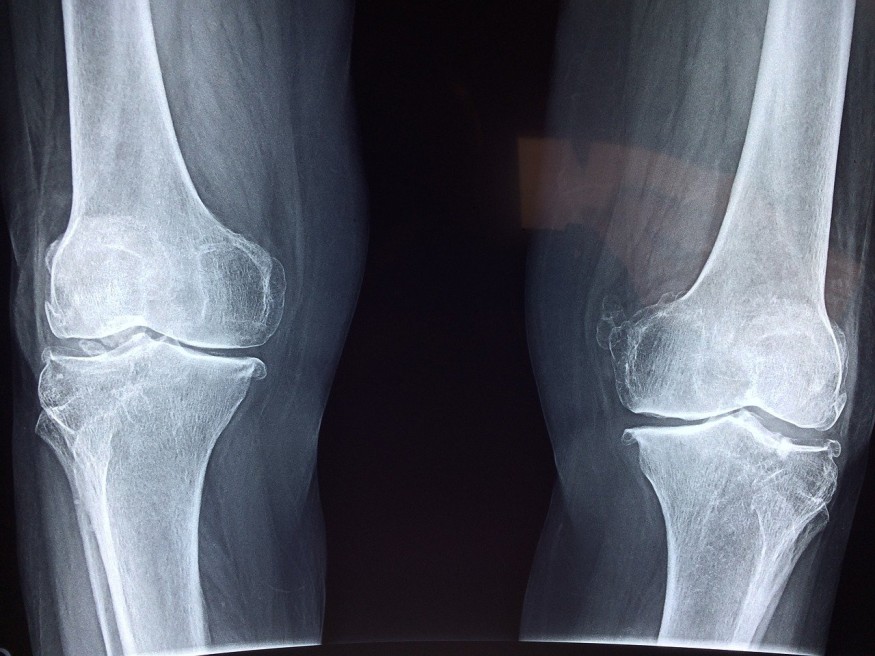
Bioengineers from the University of Connecticut used piezoelectric nanofibers to successfully regrow cartilage in a rabbit's knee. This implant device generates a tiny electric current to stimulate cartilage regrowth in a hop toward healing joints and treating arthritis.
Rabbits in the study were implanted with the device, and every time it moved. It also generates a tiny electric current due to mechanical forces that heal the joints after cartilage damage.
Arthritis Treatment: Knee Implant That Conducts Electric Current Stimulates Cartilage Regrowth to Heal Joints
Available Treatment for Arthritis
Arthritis is a painful disease caused by the swelling and tenderness of one or more joints, according to Mayo Clinic. It is characterized by joint pains and stiffness that worsen with age, and some of its most common types are osteoarthritis and rheumatoid arthritis.
Osteoarthritis affects millions of people worldwide, when the protective cartilage that cushions the end of bones is damaged. It usually affects the hands, knees, hips, and spine joints. Meanwhile, rheumatoid arthritis happens when the immune system attacks the joints.
Arthritis is caused by the accumulation of uric acid crystals that form when too much uric acid is in the blood. On the other hand, infections and other diseases cause some types of arthritis.
In a separate article of Mayo Clinic, they said that current treatments available for this disease in the joints aim to reduce symptoms and improve the patient's life. They would need to try various kinds of arthritis treatments or a combination of treatments to know which one is the most effective.
Doctors may recommend medications, such as Nonsteroidal Anti-Inflammatory Drugs (NSAIDs), counterirritants, steroids, and Disease-Modifying Antirheumatic Drugs (DMARDs). Physical therapy is also an option, such as exercise to improve motion and strengthen muscles around joints. But they also sometimes suggest surgery if both medications and therapy do not work.
ALSO READ: Got a Bad Knee? These Are The Top Jobs That Are Bad for Your Joints
Novel Arthritis Treatment Using Piezoelectricity
According to News Medical Life Sciences, the best treatment for arthritis is to replace damaged cartilage with a healthy one. But since the supply of healthy cartilage is limited, scientists have to find an alternative to regrow healthy cartilage in the damaged joint itself.
Bioengineer Thanh Nguyen from UConn said that there had been efforts in the past that attempted to rely on the bioengineered scaffold. Still, the regrown cartilage does not behave the original one and easily breaks under normal stresses in the joint.
Nguyen has been working on cartilage regeneration and discovered that electrical currents are the key to stimulating normal growth. They designed a tissue scaffold from nanofibers of poly-L lactic acid (PLLA) that exhibits piezoelectricity when squeezed. That means it generates electrical current from mechanical forces while walking to stimulate cartilage regrowth.
When they tested it on a rabbit's knee, they observed that the cartilage grew back normally when they allowed the animal to hop and exercise on its treadmill after the tissue scaffold was implanted. Researchers noted that bones, cartilage, collagen, and even DNA and other proteins have a piezoelectric response used in the experiment to activate its healing mechanism.
However, Nguyen is cautious about the findings despite good results. He said that the technology should be tested first on a larger animal with size and weight closer to a human to make sure that the cartilage is durable. Also, they plan on testing it on older animals since the disease usually occurs in older humans.
RELATED ARTICLE : Scientists Develop Artificial Cartilage Gel to Replace Worn-Out or Damaged Natural Ones
Check out more news and information on Arthritis in Science Times.
© 2025 ScienceTimes.com All rights reserved. Do not reproduce without permission. The window to the world of Science Times.











